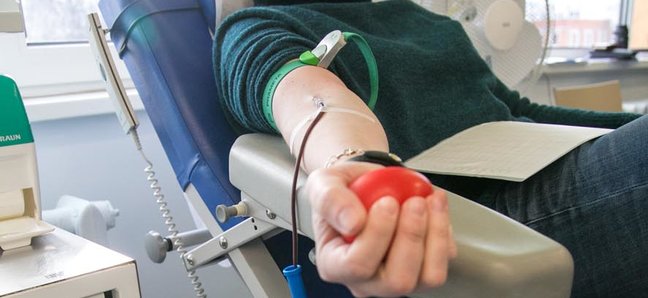Regular Blood Donations Ensure Blood Supply for Hospitals
Last year, 31,330 donors donated blood 53,486 times. Similarly to earlier years, the average number of blood donations per one donor was 1.7. The number of blood donors decreased by 1.27% in 2018. In 2018, 5099 people, i.e. 16.3% of all donors, donated blood for the very first time. There were 50,142 full blood donations, resulting in the collection of 22,564 litres of blood. Donors form 2.8% of the whole of Estonian population. As of 2013, the number of donors, blood donations and hospitals’ demand for blood have slowly decreased. However, to avoid future crises, we are in constant need for new and permanent donors – helpful people who consider donating blood a few times a year part of their lifestyle.
Dr Riin Kullaste, Director of the Medical Centre’s Blood Centre, stresses that even though all of the blood product orders submitted by hospitals were fulfilled and no patients were left without help last year, blood centres are worried about both the decline in donor numbers and the increasing inability to ensure the supply of certain donor blood with rare phenotypes. Over the last six months, there have been problems with ensuring the sufficient supply of all rhesus negative blood groups, which is why blood centres have issued many additional calls for donations. “The availability of a sufficient amount of safe blood to all patients who require a blood transfusion depends above all on those people who value donorship and consider it part of a healthy lifestyle,” said Dr Kullaste, adding that: “People’s willingness to give blood in emergency situations is heart-warming and highly commendable, but it is best to have a sufficient number of regular donors. This ensures us a sufficient blood reserve, provides us all with a sense of security and helps us greatly in both emergency and regular situations.”
In the case of male donors, the minimum interval between full blood donations must be at least 60 days. Women are advised to wait 90 days. Regular blood-giving means that the donor’s health status is checked, and their health indicators are monitored upon each donation and the results of lab analyses are dynamically assessed. Regular donors’ health indicators are constantly monitored, which ensures the maximum safety of the blood they give when it comes to pathogens. This is an advantage when, for instance, selecting donor blood for preparing blood components for children. Regular donors are also welcome to undergo apheresis procedures to donate thrombocytes and plasma. Dr Kullaste reiterates: “If a blood centre asks you to donate blood, then your blood group is in high demand among those needing help. Therefore, make sure to come in or let us know why you can’t answer our call this time.”
Last year, the number of blood donors included 666 apheresis donors, who gave 3,344 doses of plasma and thrombocytes. One donor completed five apheresis procedures on average and 95% of them were performed in the Blood Centre of the North Estonia Medical Centre in Tallinn. Blood collected during apheresis procedures formed 6.3% of all blood donations.
There are four blood centres in Estonia: the Blood Centre of the North Estonia Medical Centre, the Blood Centre of Tartu University Hospital, the Blood Service of Pärnu Hospital and the Blood Service of Ida-Viru Central Hospital. Blood centres have five stationary blood donation points in total – two in Tallinn and the other three in Tartu, Pärnu and Kohtla-Järve respectively, while donor days are organised in various locations. The blood donations collected during tours organised by blood centres formed 44% of all full blood donations last year. 14,886 people, i.e. 47% of all donors, gave their blood during tours.
Last year’s tour, which was organised under the slogan “Ka doonor on riigikaitsja” (“Donors defend the country, too”), was the 12th of its kind and took the donor tents all across Estonia, running for a total of 20 days. The tour, which ran from May to September, stopped in nine cities: Tallinn, Keila, Rapla, Paide, Haapsalu, Rakvere, Pärnu, Tartu and Viljandi. In summer 2018, the donor tents of the Blood Centres of the North Estonia Medical Centre and Tartu University Hospital and the Blood Service of Pärnu Hospital were visited by 2528 people, who gave over 1137 litres of blood in total.
The latest information about blood groups needed is available on the Blood Centre’s website at verekeskus.ee and its Facebook page Doonorid ja Sõbrad.
